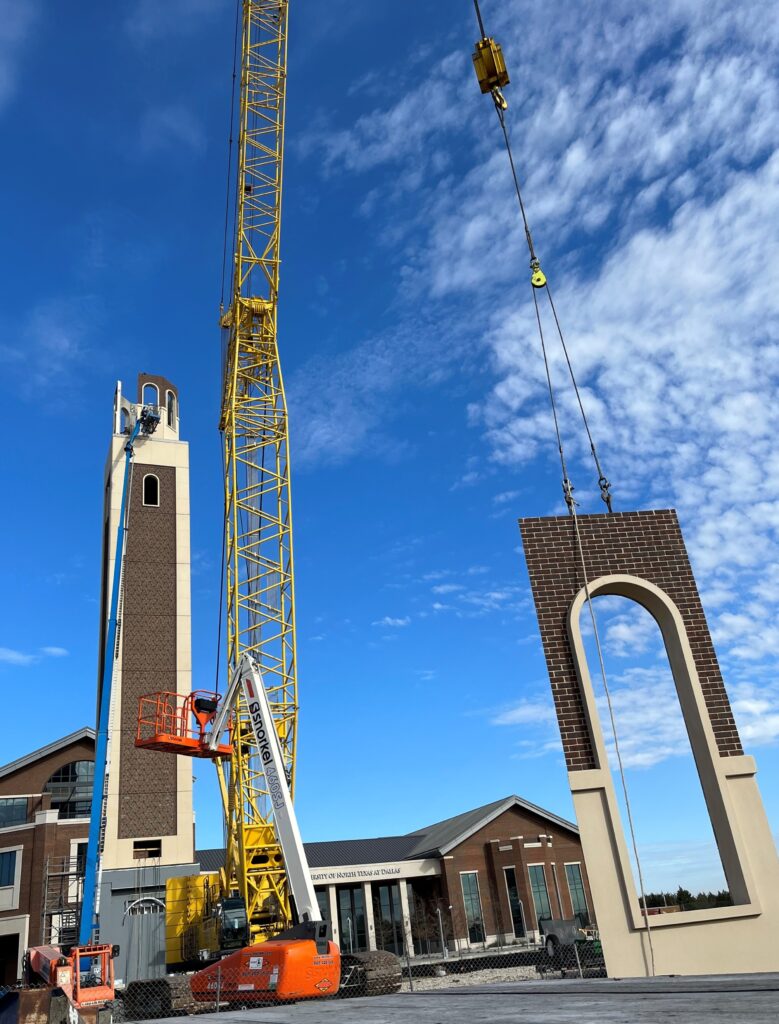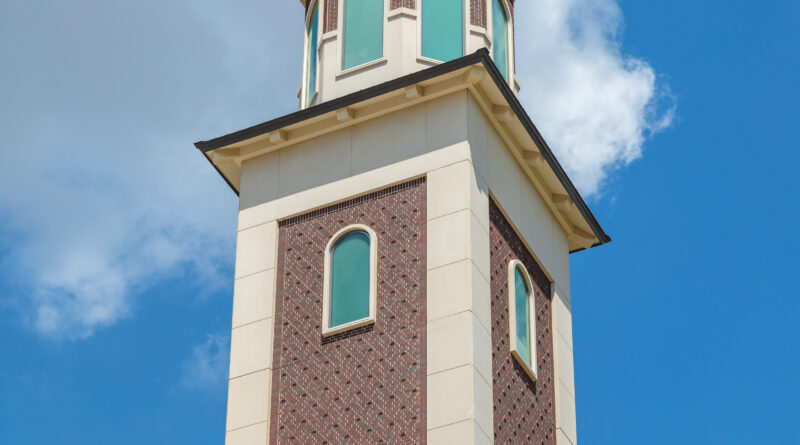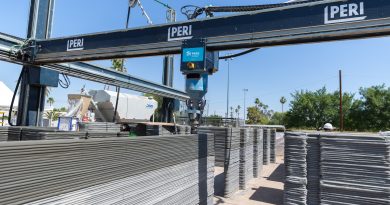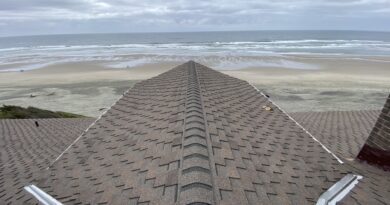Building an Icon
Tower Wins Design Award at University in Dallas, Texas
by Mason Nichols, writer for the Precast/Prestressed Concrete Institute
Standing 180 feet tall in the center of the University of North Texas at Dallas (UNTD) campus, the Amanda and G. Brint Ryan Tower is a source of pride for students, faculty, staff, and administrators. The tower, which includes a water feature, donor wall, masonry seat walls, and a lighted pedestrian plaza, is situated adjacent to the university’s new student center and marks the intersection of several notable structures on campus, including UNTD’s new amphitheater. Thanks to its tremendous height, Ryan Tower is seen as a beacon of promise, symbolizing the university’s commitment to higher learning and service to the surrounding community. A self-supporting precast concrete tower system with thin-brick architectural wall panels and precast concrete floor slabs was critical to making the project possible.
The original design for Ryan Tower called for a structural steel frame with hand-set masonry. However, this approach would have required an extended construction schedule due to the complexity associated with the work, such as the need for extensive scaffolding to install the masonry. As a result, the project would have caused significant disruptions in the center of the campus. Recognizing these issues, general contractor Post L Group of Fort Worth, Texas, contacted Enterprise Precast Concrete of Corsicana, Texas, to determine whether an alternative precast concrete solution was viable. Together, the team decided on a precast concrete system that could provide the same design aesthetic while meeting a more aggressive schedule and minimizing site impact.

“To match the overall campus aesthetic, the brick and precast concrete features of the tower needed to visually relate to the surrounding architecture,” said Hunter Heinrich, AIA, business development manager at Enterprise Precast Concrete. “We designed a thin-brick application within precast concrete panels. This solution has a unique bond design with a projected brick every third brick on every fifth row.”
This thin-brick approach matched the look of many of the other buildings on campus. To guarantee there would be no issues setting the campus brick into architectural precast concrete panels, the project team built mock-up panels with the brick cut to a thin width. The thin-brick panels were then shipped to Clemson University, where they were tested for absorption, pullout strength, and freezing-and-thawing cycle testing. After passing these tests, the project brick was ready to be cut down and placed into the final architectural precast concrete wall panel forms.

The 180 foot tall precast concrete tower system uses 70 load-bearing, moment-resisting architectural precast concrete wall components and precast concrete floor slabs. Above the podium, which was constructed using cast-in-place concrete, no other structural members were used. This design required specialized engineering to ensure that the precast concrete tower would be self-supporting. Part of this effort involved the use of three-dimensional finite element analysis to properly engineer the system to handle the wind and seismic conditions at the installation site. The Enterprise Precast Concrete team also used building information modeling methods to ensure the structural integrity of the tower and maximize the efficiency of the precast concrete system.
At the conclusion of the engineering process, the precast concrete was manufactured in November 2021 and quickly erected over the span of just 15 days in December. Today, the iconic structure in the center of campus can be seen from miles away, so it serves as a way for UNTD students, staff, and visitors to orient themselves. Thanks to the use of precast concrete, Ryan Tower will continue to be a symbol of hope and progress at UNTD for years to come.



